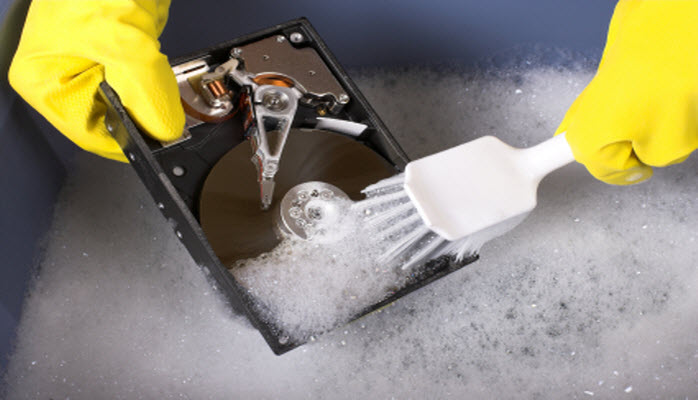Have you ever caught yourself not really listening to what your donor is saying on the phone because you’re so busy thinking about how you can get them to meet with you? Or have you ever asked a donor to meet with you, saying you want to get their input, but you really don’t plan on implementing what they share – you’re just trying to get the meeting?
For too long, the focus and measure of success in our sector has been (and often still is) getting that donor meeting. That focus leads to only one place. Donors feel manipulated and the relationship is transactional. You don’t feel good about your job every day and donors definitely don’t feel good about you and your organization, so they give less or go away.
Ok, so what should you be focused on? The key to your success is to focus on building an authentic relationship of trust and partnership with each of your donors. I know. That sounds easier said than done, but it is something you can do in a strategic and meaningful way.
This approach requires you to actively learn your donor’s passion and interests and build a plan that provides disciplined, consistent, and meaningful follow up. Let me share what I mean by this in a story to help make this concept of building authentic relationships of trust into something real and applicable.
Alexandria has been giving $5-$10K each year for the past five years. You have her in your caseload qualification pool to take through the seven-step qualifying process to see if she is interested in a two-way relationship with you and your organization.
You send Alexandria an introduction letter that lets Alexandria know you will be following up with a phone call. After leaving one message and a few attempts, you are able to reach her and have a ten-minute conversation.
In that conversation, you let her know your role is to learn more about her passions and interests so you can connect her in more meaningful ways to your mission. You ask her how she prefers communication, and she tells you email is best. You ask about what inspired her to give and continue to give over these past five years and learn she is most interested in your clean rivers initiative and is an environmental lawyer. She also shares that she is headed into a big case and will be buried in work over the next three months. You ask if she is ok with you emailing her some information about your clean water initiative and that you would love to have a longer conversation about her passion and expertise down the road when she has more time available.
Wow, that was a fantastic 10-minute call. You asked great questions and learned quite a bit. And now this donor is qualified, so you move Alexandria onto your caseload.
Now… what do you do next? If your sole focus is to get a meeting, you might immediately start asking about getting together, ignoring her comment about being very busy in a court case for three months. Or, unintentionally, while you deal with the latest fires, you might not follow up at all for months and forget to reach out again when her schedule allows. Both these approaches would reinforce that you didn’t really see Alexandria as a partner and would likely make it even harder for you to get a meeting because she doesn’t see the value.
Instead, we recommend that as soon as you move Alexandria onto your caseload, you build an individualized revenue goal and 12-month communication plan. Here is what it might look like. And remember, it can change at any time as you learn more information about the donor.
Alexandria’s Communication Plan:
- Month 1: Thank You Note: You send a thank you note for taking the call and summarize that you appreciated her sharing her interest in the clean rivers initiative and that email is her preferred communication.
- Month 2: YMAD: Send “You Made a Difference” touch point with a clean water initiative update.
- Month 3: Newsletter: You email the latest newsletter with a personal note highlighting an article you think might interest her.
- Month 4: Invite: Via email, you share that you hope her big case has gone well and invite her to a Zoom expert learning session on your waters initiative.
- Month 5: Meeting: Ask via email if she has the time now for a meeting so you can learn more about her interest in clean water and her work in environmental law.
– Additional Touch Point: Project Update: Email information about an upcoming clean water plan. - Month 6: Meeting: Ask if she is interested in learning more about the water plan needs and having discussion about her interest in supporting that project.
– Ask at Meeting: Make an ask for 25K for new water project.
– Thank You: Send a card with a picture of a beautiful river with a thank you for her gift. - Month 7: YMAD: Follow up with a story of impact on that project.
- Month 8: Invite: Invite on a tour of project work.
- Month 9: Tour with project lead takes place.
– Impact Report: Share update on prior gift’s impact. - Month 10: Personal Touch Point: In your meeting, you learned she is an avid kayaker, so you send her an interesting article about kayaking.
- Month 11: Interesting Article: Send her an article about clean water, environmental lawyers, something of interest to her.
- Month 12: YMAD: Recap of her support over the last year + the impact made.
Remember, it’s important to keep your plan flexible and focused on building an authentic partnership with your donor. Alexandria may not be able to meet the month you planned or join in an expert session on a certain day. She may meet via phone only, or not be able to meet at all, but communicates well through email. Either way, Alexandria is experiencing consistent, meaningful, and relevant follow up from you. She feels valued and listened to, like she’s a partner in your work. As a result, she will most likely continue to give, give more, and even give transformationally.
I hope this inspires you to take some pressure off getting the meeting and finding ways to build meaningful relationships with your donors instead.
Karen






0 Comments